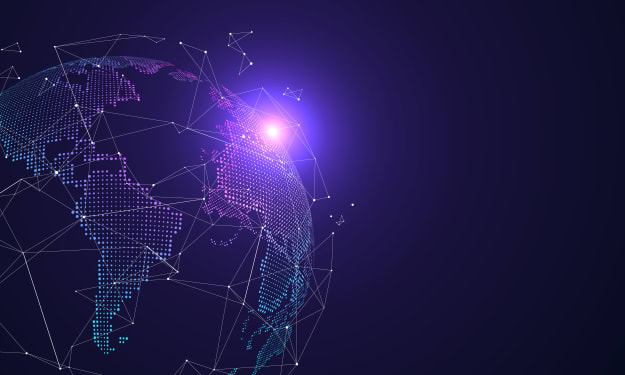
Introduction:
Web 3 is the next generation of internet that is being built on blockchain technology. It aims to create a decentralized web where users have more control over their data and privacy. The idea of Web 3 was first introduced in 2014 by Dr. Gavin Wood, who was also one of the co-founders of Ethereum. Since then, many blockchain projects have been working towards building the infrastructure for Web 3.
Web 3.0 builds on the foundations of Web 2.0, which enabled the development of social media, online collaboration, and cloud computing. Web 3.0 will provide a more secure and decentralized platform that empowers users with control over their data and identity.
History of web 3 :
Web 3.0 is a relatively trending concept, and its history can be traced back to the development of blockchain technology in 2009. Blockchain is a decentralized, distributed ledger that records transactions on a network of computers. It was created to support cryptocurrencies like Bitcoin and Ethereum, but it has since been applied to many other use cases.
In 2013,
The term "Web 3.0" was coined by John Markoff in an article in The New York Times. The article described Web 3.0 as a "semantic web" that would use artificial intelligence and machine learning to enable computers to understand the meaning of data on the internet. This vision of Web 3.0 was focused on creating a more intelligent and personalized web that could anticipate user needs and deliver more relevant information.
In 2014,
Web 3 was first introduced by Dr. Gavin Wood, who was also one of the co-founders of Ethereum, He launched, providing a platform for building decentralized applications (dApps) and smart contracts. Ethereum's success paved the way for other blockchain platforms, such as EOS, Tron, and Cardano.
In 2015,
The InterPlanetary File System (IPFS) was created by Juan Benet. IPFS is a distributed file system that allows for the creation of decentralized applications and web services. IPFS is an important component of Web 3.0, as it enables the creation of peer-to-peer networks that are not reliant on centralized servers.
Since then, Web 3.0 has evolved to include other technologies such as decentralized finance (DeFi), non-fungible tokens (NFTs), and decentralized autonomous organizations (DAOs). These technologies are enabling new forms of economic activity and governance that are not reliant on traditional centralized institutions.
Today, Web 3.0 is still in its early stages, and there are many challenges that need to be addressed before it can become a mainstream platform. However, as more developers and businesses start to explore the potential of Web 3.0, we are likely to see rapid growth in this area in the coming years.
In this article, we will explore the key features of Web 3.0 and how it differs from Web 2.0.
Key Features of Web 3.0:
Decentralization:
One of the key features of Web 3.0 is decentralization. Unlike Web 2.0, which is controlled by a few large companies such as Google, Facebook, and Amazon, Web 3.0 is designed to be decentralized. It uses blockchain technology to enable peer-to-peer interactions without the need for intermediaries.
Privacy and Security:
Web 3.0 aims to provide users with more control over their data and identity. It uses encryption and other security measures to ensure that user data is protected from unauthorized access. Web 3.0 also provides users with the ability to remain anonymous if they choose to do so.
Interoperability:
Web 3.0 aims to enable different applications and services to work together seamlessly. It uses open standards and protocols to enable interoperability between different platforms. This will make it easier for users to share data and communicate across different applications.
Artificial Intelligence:
Web 3.0 will also incorporate artificial intelligence and machine learning technologies. This will enable applications to become more intelligent and responsive to user needs. AI will also be used to improve search results, identify patterns in user behavior, and personalize content.
Smart Contracts:
Web 3.0 will use smart contracts to enable self-executing contracts between two or more parties. These contracts will be executed automatically when certain conditions are met. Smart contracts will enable new forms of economic activity and facilitate secure and transparent transactions.
Differences between Web 3, Web 2, and Web 1:
Web 1.0, Web 2.0, and Web 3.0 represent different stages in the evolution of the internet. Here are the differences between these three versions of the web:
Web 1.0: Read-only web
Web 1.0, also known as the "static web," was the first stage of the internet. It was a read-only web, where users could only consume content, and there was no user interaction or participation. Web 1.0 websites were primarily static HTML pages, and they were often difficult to navigate. Search engines like Yahoo! and AltaVista were the primary tools for finding information.
Key Features:
- Static web pages
- Read-only content
- Limited user interaction
- No social media or user-generated content
- Limited multimedia content
- Basic HTML design
Web 2.0: Social web
Web 2.0, also known as the "social web," emerged in the mid-2000s and represented a significant shift in the way people used the internet. Web 2.0 introduced user-generated content, social media, and collaboration tools that enabled users to interact and participate in the web. It was a more dynamic and interactive web that allowed for real-time communication, online collaboration, and social networking.
Key Features:
- Dynamic web pages
- User-generated content
- Social media and networking
- Rich multimedia content (audio, video, images)
- Collaboration and online communication tools
- Interactive design and user interfaces
Web 3.0: Decentralized web
Web 3.0, also known as the "decentralized web," is the next stage in the evolution of the internet. It is characterized by decentralized networks that prioritize security, privacy, and interoperability. Web 3.0 uses blockchain technology and other decentralized technologies to enable peer-to-peer interactions without the need for intermediaries. It is a more secure and private web that empowers users with control over their data and identity.
Key Features:
- Decentralized networks
- Emphasis on security and privacy
- Interoperability between different applications and platforms
- Use of blockchain technology and smart contracts
- Artificial intelligence and machine learning
- More control over user data and identity
Part 2 continues ... in the next story ...
Like, Comment and Subscribe.
With Love,
Aerious.
About the Creator
Aerious
I Lyk to wryt ,






Comments
There are no comments for this story
Be the first to respond and start the conversation.